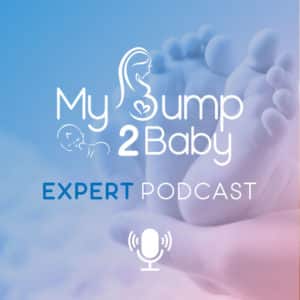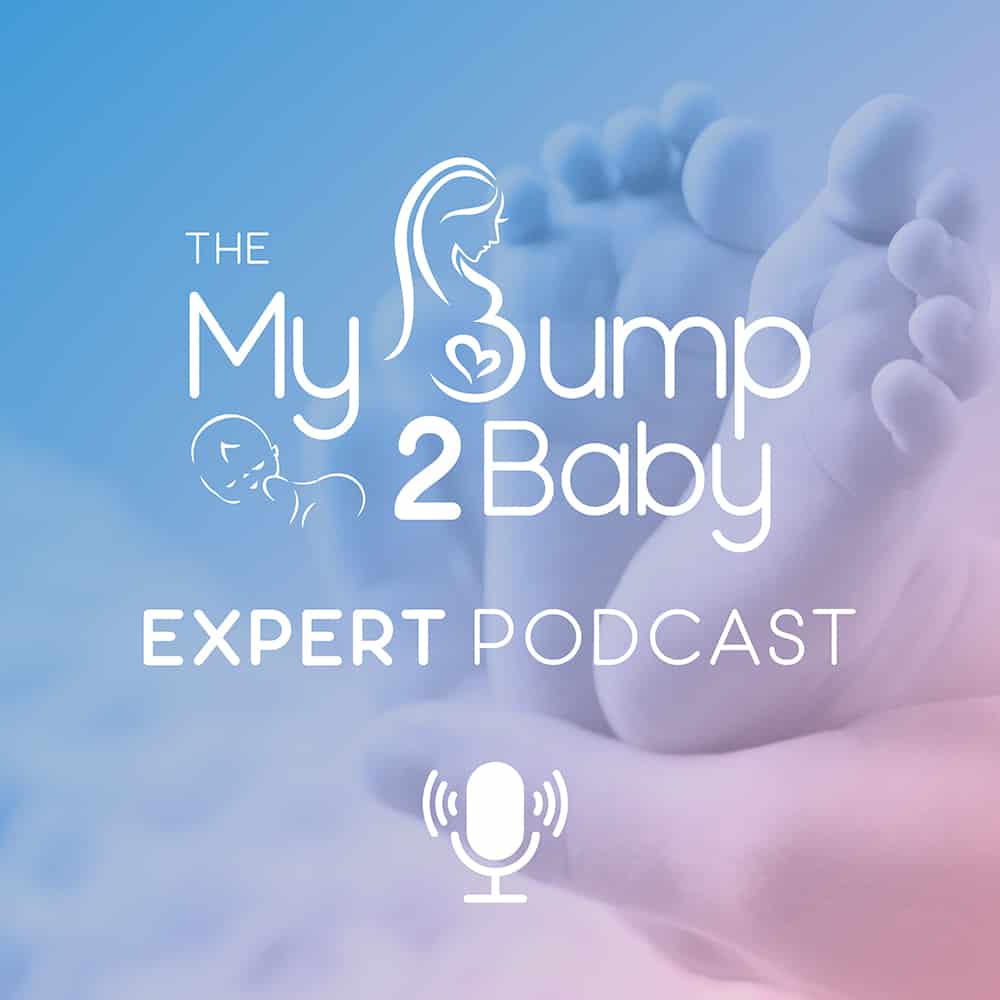- Stem Cell Banking
Today we speak with Dr. Lesley-Ann the Chief Scientific officer at Cells4Life all about Stem Cell Banking and why you should think about doing this for your children.
We talk about the benefits of stem cell banking, why someone would store their babies stem cells, why the number of cells is important, placenta banking and its benefits and the process.
01444 873950 / 07753 247448
[00:00:00] Carla: My Bump 2 Baby is one of the UK’s leading parenting platforms. You can find local pregnancy to preschool groups, classes, and lessons, wherever you are in the UK. Not only that, but you can read our honest reviews on the latest products, days out and services that you as parents need to know. We also work with trusted financial advisors, family law, solicitors, and now estate agents, too.
[00:00:33] If you would like to find your nearest, trusted expert, head over to www.mybump2baby.com.
[00:00:46] Are you a parent looking to start a small business, perhaps you’ve no idea where to start. Or maybe you’ve already got a small business and you’re struggling to take it to that next level. My bumped baby is here to support you. My bumped baby business offers training packages, mentorship programs, one-to-one support, and e-courses, if you would like more information on how to grow your business with my bumped baby.
[00:01:19] Then email us. Our email address is [email protected].
[00:01:35] Hello, and welcome to my Bump 2 Baby Expert podcast, where we bring experts from all over the UK to answer your questions on everything, pregnancy to preschool.
[00:02:02] Today I am joined by the lovely Lesley-Ann from Cells4Life. Lesley-Ann is the chief scientific officer. Lesley-Ann holds a PhD and was previously Group Leader at The Institute of Cancer Research. Lesley-Ann’s expertise is in the development of model systems for the identification of phenotypic and genotypic alterations that influence response or resistance to cancer therapies and the translation of these into novel treatments and biomarkers. Lesley-Ann has a strong academic background and published over 170 manuscripts in high-impact journals including Lancet,Journal of Clinical Oncology, Nature Communications, Cancer Cell, Cancer Discovery, Cancer Research and Clinical Cancer Research for which she also acts as a peer reviewer. She has acted as an advisor for Novartis, Genentech and AstraZeneca and has held several academic/industrial awards.Lesley-Ann has presented her research all over the World at numerous prestigious meetings including AACR, SABCS, ESMO and ECC. She is passionate about the use of stem cells, cellular therapies and regenerative medicine.She is passionate about the use of stem cells, cellular therapies and regenerative medicine.
[00:02:10] Hello everybody. And welcome to my Bump 2 Baby’s Expert podcast. Today. I am joined by Lesley, the chief scientific officer from Cells4Life, and we’re gonna be talking all about stem cell banking. So hello, Lesley, how are you?
[00:02:26] Lesley-Ann: Hi, I’m very well, thank you. It’s a pleasure to join you.
[00:02:29] Carla: Oh, it’s a pleasure to have you on, um, I’m really, really excited to talk to you about this subject.
[00:02:34] So can we get started with what is Cells4life?
[00:02:39] Lesley-Ann: Well, Cells4Life is actually the UK’s leading umbilical cord blood stem cell bank. So our goal is to store stem cells from babies.
[00:02:50] Carla: Wow right. This, this really, I’m really excited to talk to you about this subject because I think people, a lot of parents very like me when I first had my son didn’t realize about the huge benefits, um, that this has.
[00:03:04] So before I get into that though, can we talk about because you, you, launched the company. Didn’t you, can you tell us a little bit about how it all started?
[00:03:12] Lesley-Ann: Yes. So, um, my husband and I are both scientists, so I led a research team at the Institute of Cancer Research for 20 years and, and my husband was there as well.
[00:03:24] So our, our training is in, in cancer actually in virology. And, uh, during our time, we became very aware of the field of regenerative medicine, which is a branch of medicine that’s developing quite rapidly now. And it looks at methods to regrow repair or replace damaged or diseased cells, organs and tissues, and the field harnesses, the power of stem cells and my husband and I became aware that umbilical cord blood is a very rich source of these cells.
[00:03:58] And we wanted to store our daughter’s cord blood so that we could maybe access it in the future for regenerative medicine purposes. But, uh, what we found was that there weren’t really any companies that fit the criteria that we wanted. And so together with a, a medical colleague, we launched Cells4Life and our daughter was actually patient one and her and her brother’s cord blood are stored in our facility. Ready should they require it in the future. So we started in 2002. And as you can imagine, as scientists and doctors, we soon had many colleagues and friends wishing to store their babies, umbilical cord blood. And from that we grew.
[00:04:45] Carla: Wow. It sounds amazing. Obviously I’ve heard of you guys and, um, you know, I think. A lot of a lot, we’re a lot more aware aren’t we have all different illnesses that can come about, um, unfortunately, but it is good in a way, um, you know, with the internet now we’re a lot more aware of all these things, but there’s so much that you can do. And, and it, this, this kind of thing, I think a lot of parents might not be aware that you offer such things. So, so can you tell me a little bit more about what is cord blood and tissue banking then? Um, and the stem cell storage, how that works.
[00:05:20] Lesley-Ann: Yes, certainly. So cord blood is the blood that remains in the placenta and the umbilical cord after the birth of your baby and cord blood and umbilical cord tissue and placenta are extremely rich in these stem cells.
[00:05:37] So stem cells are sort of like the building blocks for all of our tissues. They’re rather like the blank canvas. And so these stem cells can be used to generate different tissues in your body. And it’s sad to think that once your baby is born, your placenta is normally thrown away along with the very rich source of stem cells in the cord blood. And so cord blood and tissue banking seeks to preserve the stem cells for future therapeutic uses.
[00:06:07] Carla: It’s so interesting. So, so could you give me a couple of examples of what, what this can be used for?
[00:06:14] Lesley-Ann: Oh, gosh. Yes. Um, so I I’ve gotta go back in history really. Yeah. Um, so I think since 1988, if we think about the numbers, there’s been more than a million stem cell treatments worldwide.
[00:06:28] Carla: Wow.
[00:06:29] Lesley-Ann: And umbilical cord blood stem cells are a recognised therapy actually for over 80 diseases. Um, and these include various cancers like some of the solid cancers such as neuroblastoma, and they can also be used to treat, um, cancers such as leukaemia, lymphoma, myeloma. But I think it’s important to note that the chance of you using cord blood to treat your own child, should it develop leukaemia is actually very rare, but it could be used for a sibling for instance.
[00:07:04] Carla: Wow.
[00:07:05] Lesley-Ann: But, um, Cord blood can be used to treat other blood disorders. So genetic disorders such as sickle cell anaemia and immune disorders, I don’t know whether you’ve heard of, uh, a thing called skid, which is where a child’s immune system is completely compromised. You can actually use cord blood, um, which replaces the bone marrow and regenerates the immune system.
[00:07:29] So there are now hundreds of clinical trials investigating the use of stem cells to treat common and often life threatening conditions. So there are many clinical trials looking at use of stem cells for the treatment of heart disease, for instance, so inoperable heart disease, um, Alzheimer’s, diabetes and more recently we are seeing a move towards the use of stem cells for neurological disorders. So treatment of strokes, cerebral palsy, multiple sclerosis, and even autism. And in that arena, we work with Duke university. So we’ve had several cord blood samples that have been released to treat children with autism.
[00:08:14] Carla: Wow. Gosh, that is, that is amazing. Really, really? I mean, these are all things that you think of, you know, when, when you get older, I mean, how, how long do the. How long, you know you’re banking it? How long does it last?
[00:08:28] Lesley-Ann: Oh, over 25 years. So the cells are actually kept in liquid nitrogen, which is below minus 190 degrees. So they’re, they’re almost in suspended animation. And then when you need them, you just defrost them and they become viable again.
[00:08:45] Carla: That’s brilliant. And, and you mentioned siblings can use this.
[00:08:50] Lesley-Ann: Yes.
[00:08:50] Carla: Could, could a parent use it if, if they became unwell or?
[00:08:54] Lesley-Ann: Yes, absolutely. So if we think that, um, your child is, is 50% mum and 50% dad, um, we call that, uh, haplo identical, which means that your, your baby’s stem cells will be a 50% match to you. So you could certainly use it for, for a parent.
[00:09:13] Carla: Gosh, that that blows my mind. It’s amazing. Wow. So why is the number of cells important and how does Cells4Life ensure parents get as many as possible?
[00:09:23] Lesley-Ann: Oh, that’s a very important question. Um, so it’s been shown clinically that the therapeutic benefit is directly determined by the number of viable stem cells that are introduced into a patient. And the reason for this is that when we do inject the cells into the patient, obviously some of them will die, but at Cells4Life, we’ve also been looking at the impact of processing and thawing on stem cells, using different technologies. And you can lose up to 40 to 90% of the stem cells. before you actually get them to the child, which means that with a lower number of cells, you’d only be able to treat a child that’s of a, of a young age or, or a small size. And what we’ve been trying to do is develop optimal processing systems so that we can isolate as many stem cells as possible. So I’m probably gonna go on a long story now,
[00:10:32] Carla: but no, no, it’s brilliant. The more information, the better.
[00:10:35] Lesley-Ann: What we wanted to do was to look scientifically at what the problems are. So one of the things you have is once you’ve isolated and stored the stem cells, they’ve got a lot of red blood cells with them. And those red blood cells can be, um, involved in rejection, you know, the, the, the recess and graft versus host problem. And so what, uh, clinicians will do is they’ll wash those stem cells to get rid of the red blood cells are the contaminating, the sample. And in, so doing, you’re actually dropping the number of stem cells that you’ve got to inject into your patient. Um, so what we did was to develop a system that could get rid of those contaminating red blood cells and remove the need to wash the sample prior to transfusion. So by doing that, we can isolate more stem cells. And secondly, what we wanted to do was to generate a system which was compatible with delayed cord clamping. And I’ll probably come back to that a bit later on. So we developed a platform technology called Toticyte, which is our cells plus system.
[00:11:55] And toticyte is a CE marked medical device. And we can isolate three times more stem cells using this technology. So we took our data to the scientific community for peer review. That’s very important because you want other scientists to agree with your findings and our findings are actually published, but we’ve been able to show that using toticyte, we can isolate three times more stem cells compared to other commercial platforms that are used. Now, the importance of that is that if you think about a small core blood volume, say 10 mills, we can isolate the same number of stem cells from that 10 mills that other systems would require 30 mills to capture. Wow. So now you’ve got a system where you’ve optimised the number of stem cells that you are isolating, and you are reducing the volume of cord blood that you need. So therefore by having three times more stem cells, we can treat larger children.
[00:13:12] Carla: That’s brilliant. Wow. And the fact you’ve had other scientists, like, you know, involved in the process. I mean, it just adds a lot more confidence. Doesn’t it to people.
[00:13:22] Lesley-Ann: Yes. I mean, when. Exactly when you’ve, when you’ve got stem cell scientists from around the world that are looking at your findings in detail, they’re looking at your raw data, they’re checking your statistics and all of your processes. Then you feel confident in, in your claims.
[00:13:38] Carla: That’s incredible. It really is. Wow. So you offer placenta banking, don’t you? So is that, is that part of stem cell side of things or is that separate?
[00:13:48] Lesley-Ann: That’s actually separate. So I think scientifically well as a company, we, we are clearly research driven. Um, we try and stay ahead of the literature. And it’s been very clear in recent years that stem cells from different sources have different therapeutic properties. And we were offering storage of umbilical cord, blood and umbilical cord tissue. So umbilical cord tissue has a high number of what we call Mesenchymal stem cells.
[00:14:22] And these are the ones that have had a lot of, uh, research done around use in regenerative medicine and for use in treatment of things like diabetes, heart disease strokes, but more recently it’s been shown that. The stem cells, isolated from placenta have different properties. So if we think back, I mean, for instance, you know, since 1910 amniotic membrane has been used to treat burns and, and to relieve scarring and clinical trials have shown that cells from the placenta are effective at treating diabetes.
[00:15:01] And they’re probably more effective at treating diabetes than those from umbilical cord tissue. Whereas those from umbilical cord tissue are better at treating osteoarthritis. So we thought, right, we need to offer more sources for parents to take on board. And if I had known this at the time. I would’ve absolutely stored my placenta.
[00:15:23] Um, I mean, even, even now they’re, you know, in America, they’re looking at placental immune cells, so they’re isolate, isolating these immune cells and they’re testing them for potential therapies for certain cancers. Because these immune cells are naive, you can reprogram them to recognise the, the cancers. I mean, it’s just phenomenal. What’s out there.
[00:15:51] Carla: That’s incredible. So with the placenta banking and obviously the stem cell side of things, would they be, could you do both for one, or if you had siblings, would you do maybe one. The stem cell for one, and then the placenta banking for the other. How, how would that work?
[00:16:07] Lesley-Ann: I mean, basically you, you can do what we did is to try and develop almost like a lock and load system where, where parents can choose what they want. So they may decide that they’d like, Cord blood and umbilical cord tissue and chorionic Vili or they may choose that they want cord blood, umbilical tissue, umbilical cord tissue, and amnion, or they may want everything they can choose what they want. So as you say, it may be that for a sibling, you might want to select the placenta. Whereas for, um, the other child, you may have selected the cord blood and the umbilical cord tissue, but I would definitely think about the cord blood from each child, and then maybe the placenta or umbilical cord tissue. One or, or one of the others, if you couldn’t have the whole package. But as I say, I mean, this is amenable to you choosing your own package and we have people on board that will advise you sort of the best system that, that you can choose.
[00:17:11] Carla: That’s amazing. Yeah, because I imagine it’s a bit of a, a minefield really, because you know, there’s so many benefits for, for all of those, it sounds like. So yeah. Having, having that support there and just to talk it through with someone’s really useful. Yeah. Yes. Um, so, so how is Cells4Life then different? I know, obviously we spoke about, um, how you guys have scientists that come in and look over everything. Is there anything else.
[00:17:36] Lesley-Ann: Well, I think, you know, all companies say that they care about their customers, but we have strive to provide the best service and to move with the science. Um, we’ve been unique in our cells plus system to allow customers to take advantage of, you know, the delayed cord clamping. So we can still isolate stem cells from very small blood volumes, which is always a concern for, for, for clients. We’ve been the first to bring online the placental banking, being aware of what the future holds. And we are very rigorous with our validations and our procedures, and we work under the human tissue authority. So the human tissue authority, um, governs all transplantations and we seek advice from them when necessary and they govern.
[00:18:30] So they check that our facilities and our processes are suitable for transplantation. What we also offer is a unique stem cell insurance policy, so that no matter the financial circumstances. You would never be inhibited from accessing any stem cell treatment for you or one of your family members. So should you need your stem cells.
[00:18:55] This insurance policy will make sure that you can access them and use them. But I think one of the important things for me as we know, childbirth is never predictable.
[00:19:05] Carla: No.
[00:19:06] Lesley-Ann: Um, and so our labs. 24 hours a day, 365 days of the year.
[00:19:12] Carla: Wow.
[00:19:12] Lesley-Ann: In order to process the samples as quickly as possible, because we know that speed of process and freezing is very important.
[00:19:21] Carla: That’s really useful. That particular point that you said about, um, With the financial situation, because if your child did become unwell, a lot of the time, you know, you might have to give up work, your financial situation might change, you know, while, while you’re trying to kind of navigate life with, with, uh, you know, an ill child. That’s great. And, and, you know, you might think, you know, you might not be able to in your head think, oh gosh, we won’t be able to afford that. But having that extra reassurance to know that you can get hold of that, that that’s incredible.
[00:19:51] Lesley-Ann: Yeah, I think it is very important because if you’ve got the cells, you want to be able to access them.
[00:19:56] Carla: Definitely. Absolutely. So is Cells4Life then compatible with the delayed cord clamp clamping, because you read more and more about this cord clamping now don’t you?
[00:20:06] Lesley-Ann: Yes. I’m quite passionate about this. Yeah, I think so. A delay in cord clamping is a process where the, the umbilical cords isn’t clamped immediately. And so the blood within the cord goes into the baby and it’s been shown that that babies were in sort of clinical studies of children that have had delayed cord camping, that they have a better start in life. So they’ve done tests on things like, um, development of, um, neurological function, um, progression, et cetera.
[00:20:41] And it has been shown that, um, children that do have delayed cord clamping do fare better. And as a consequence of this, it’s now recommended by the national institutes for health and care excellence, so NICE. And there’s increasing awareness and more and more parents because of this are turning to delayed or the optimal cord clamping to give their babies the best possible start.
[00:21:08] And at Cell4Life, we do feel that, you know, the baby comes first and this is why we’ve developed platform technologies that are compatible with the delayed cord clamp.
[00:21:37] Carla: That’s amazing. It’s really, really interesting. So, so could you tell me a little bit more about what the actual process is then if someone wants to do this, how what’s involved, how does it work?
[00:22:07] Lesley-Ann: Well, um, first of all, I would recommend that people go and take a look at our website because there’s a lot of information there and then you can give us a call and speak to one of our advisors and they will tell you all about the process. In summary. What we would do is, um, send you out a welcome pack and the welcome pack will tell you about what will happen on the day of baby’s birth. Um, it will have in it a consent form because we will consent the mother so that we can take the umbilical cord blood, the placenta and umbilical cord tissue or whatever, um, tissues, uh, the, the mother would decide is going to be processed. You then have a kit that’s sent to you. And in the kit, you will have all of the items that are required for the procurement of the umbilical cord, blood, the tissue and the placenta.
[00:23:10] And you have a dedicated phlebotomists that is personally for. When you go into labor, you would ring your phlebotomist remembering to take your kit to the hospital with you. If you forget your kit, our phlebotomists all hold kits themselves. Yeah. In case of that, because we know in that frantic moment of looking for your bag, you’ve forgotten your kits, but you do have the baby grows.
[00:23:35] Carla: Mm-hmm yeah. And the hats.
[00:23:39] Lesley-Ann: Yes. Um, so, um, you, you ring your, your phlebotomist and, um, The process actually takes place after the third stage of labor. So the once the placenta, you’ve given birth to the placenta, that’s all taken away from you. You are then not disturbed. And the phlebotomist then isolates the blood and the tissue packages.
[00:24:03] It will come back and show either mum or the partner that, uh, everything has been packaged and they just sign. To show that they’ve agreed. And then you call the medical courier. Who’s a dedicated courier for you. They’ll come and pick up the, uh, samples and they’re brought straight into the laboratory where they are processed.
[00:24:26] We also take a blood sample from the mum, which is a maternal sample that’s tested for serology. That’s the normal thing that’s happened that happens with, um, blood donations. So the samples tested for HIV, hepatitis B, hepatitis C, syphilis and HTLV12. So that’s just standard serology and actual fact mum will be screened for those during pregnancy as well.
[00:24:53] Carla: I thought that, yeah, you do get those checks don’t you?
[00:24:56] Lesley-Ann: That’s right. And then once the, um, once the samples have been processed within our laboratory, we are measuring the viability of the sample during processing and we then. The process tissue into cryogenic storage, it’s tested for bacterial contamination, et cetera, to make sure it’s clean. And then a certificate is provided to the parents.
[00:25:25] Carla: Wow.
[00:25:25] Lesley-Ann: And that’s the process.
[00:25:27] Carla: That’s brilliant. And then that is stored in case you ever need it. And that that’s
[00:25:31] Lesley-Ann: however long.
[00:25:33] Carla: Yes, that’s brilliant. And can I just ask, like a question that popped into my mind, uh, while you were talking then does it make any difference? If you have a C-section.
[00:25:44] Lesley-Ann: No, we can still, yes, because the, the placenta again, would just be taken away. So generally what happens is the placenta has a gross inspection by the midwife to check for things like calcification. And after that point, it’s just handed to the phlebotomist and they go into a separate room and do all of the processing.
[00:26:03] So it doesn’t interfere with mum and the baby and partner, because you don’t want that going on. You want to see your baby don’t you really.
[00:26:11] Carla: Yeah, no, that’s brilliant. It’s, it’s so interesting. And, and really, really good. Obviously we’ll put the link to, um, the website on the show notes. Um, but if someone wants to contact you, um, guys directly, which is the best way for them to do it telephone or ?
[00:26:28] Lesley-Ann: Yes, by telephone. Yes. And, um, and they would get straight through to, to one of our advisors.
[00:26:33] Carla: Okay. And we’ll make sure that telephone number is on there as well. So, um, thank you so much, Lesley. It’s been really, really interesting. Is there anything else that you think I need to add, add that I’ve not asked you?
[00:26:46] Lesley-Ann: No, I think, I think that’s a really comprehensive. Set of questions, actually, I was really impressed with you knowing about the importance of cell number yes,
[00:26:56] Carla: I know. Well, the thing is, I think there’s, there’s so much to it isn’t there, but, but with, with all this side of things, I mean, the thing is it’s keeping our little ones safe and it’s, it’s making sure that we do everything we can, you know, at the time of the birth, but then also into the future as well. And making sure you know, that we’ve got as much as much protection as we can for.
[00:27:15] Lesley-Ann: I, I couldn’t agree with you more. I mean, I think that sort of our children are gonna be the, the first sort of generation who are gonna live to a hundred. And when we think of all of the age related disorders that they’re going to suffer.
[00:27:31] Regenerative medicine is definitely going to have a place in future therapies. And we are seeing such a drive in it at the moment, you know, with the, with the various institutes looking at use of stem cells and, uh, the speed in which it’s going into clinical trial. That it’s only a matter of time before we are going to be seeing some of the exciting results that, um, we’re all anticipating.
[00:27:57] Carla: Yeah, it’s fantastic. It’s brilliant. So, so thank you so much for being our guest and I’ll make sure that I add, uh, the link to the website and also a telephone number and an email address as well, just in case anyone wants to contact someone directly, straight away.
[00:28:12] Lesley-Ann: Perfect. Thank you, Carla. It’s a pleasure.
[00:28:15] Carla: Oh, thank you.
[00:28:17] Thanks for listening to today’s episode. My Bump 2 Baby expert podcast for any more information, see our show notes where you’ll be able to speak to Cells4Life directly.










